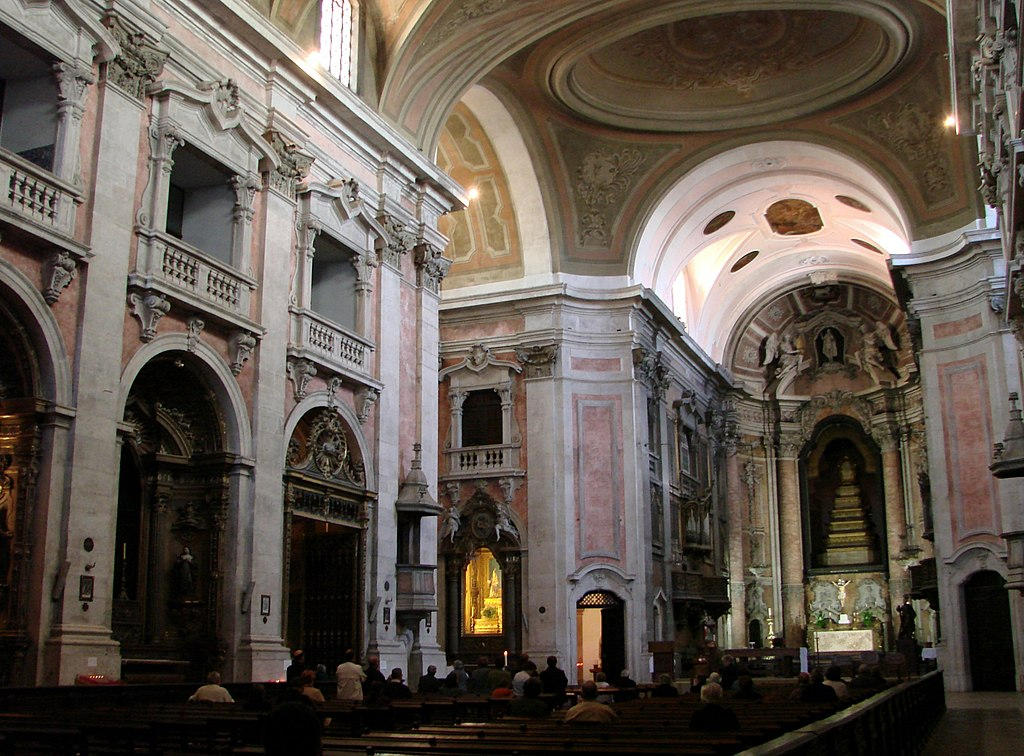The restoration following the earthquake gave the church a late Baroque character while preserving its Manueline core, which includes the baptistery and the Almadas chapel, as well as the Mannerist cloister.
The church's facade is striking, featuring a double angle composition with the church and the former convent gatehouse. Above it rises the bell tower, a work by Manuel da Costa Negreiros dating back to 1738.
Inside, the church showcases a sober interior with exquisite gilded altarpieces in late 18th-century Rococo style. The intricate gilding, azulejos (traditional Portuguese tiles), and ceiling paintings contribute to its rich and ornate decoration.
The Graça Church holds several notable features, including the collection of azulejos from the 16th, 17th, and 18th centuries. The rococo-style gilded altarpieces and the 18th-century sculptures in the intermediate chapels also deserve special mention. The sacristy, adorned with baroque decorations and a ceiling allegorical painting by Pedro Alexandrino de Carvalho, houses the impressive panel of Relics and the tomb of D. Mendo de Fóios Pereira.
Historically, the construction of the convent began in 1271, sponsored by D. Afonso III, to accommodate 50 Augustinian hermit friars. The convent became the headquarters of the Province of Portugal of the Order of Saint Augustine until its dissolution in 1834.
Lisbon.vip Recommends
Throughout its history, the church played a role in various ceremonies and commemorations. The annual procession of Senhor dos Passos da Graça (Lord of the Steps of Graça) was established in 1586, fulfilling the request of the painter Luís Alvares de Andrade. The procession, organized by the Royal Brotherhood of Senhor dos Passos da Graça, still takes place every year during Lent.
In recent years, the Graça Church has been included in the "Revive" program initiated by the Portuguese government, aiming to open up historical heritage to private investment for tourism development. In 2019, it was awarded to the Sana Group for the construction of a 5-star hotel with 120 rooms. The project, with an investment of 30 million euros, is expected to open by the end of 2022.
While the future of the convent undergoes transformation, the church itself and its surrounding garden remain outside the scope of the concession. The agreement also stipulates that the concessionaire will be responsible for constructing mortuary chapels to support the church.
The Graça Church stands as a testament to Lisbon's rich history, architectural grandeur, and religious devotion. Its combination of Manueline, Baroque, and Rococo elements, along with its cultural significance, make it a must-visit destination for anyone exploring the enchanting district of Graça.
Map View



